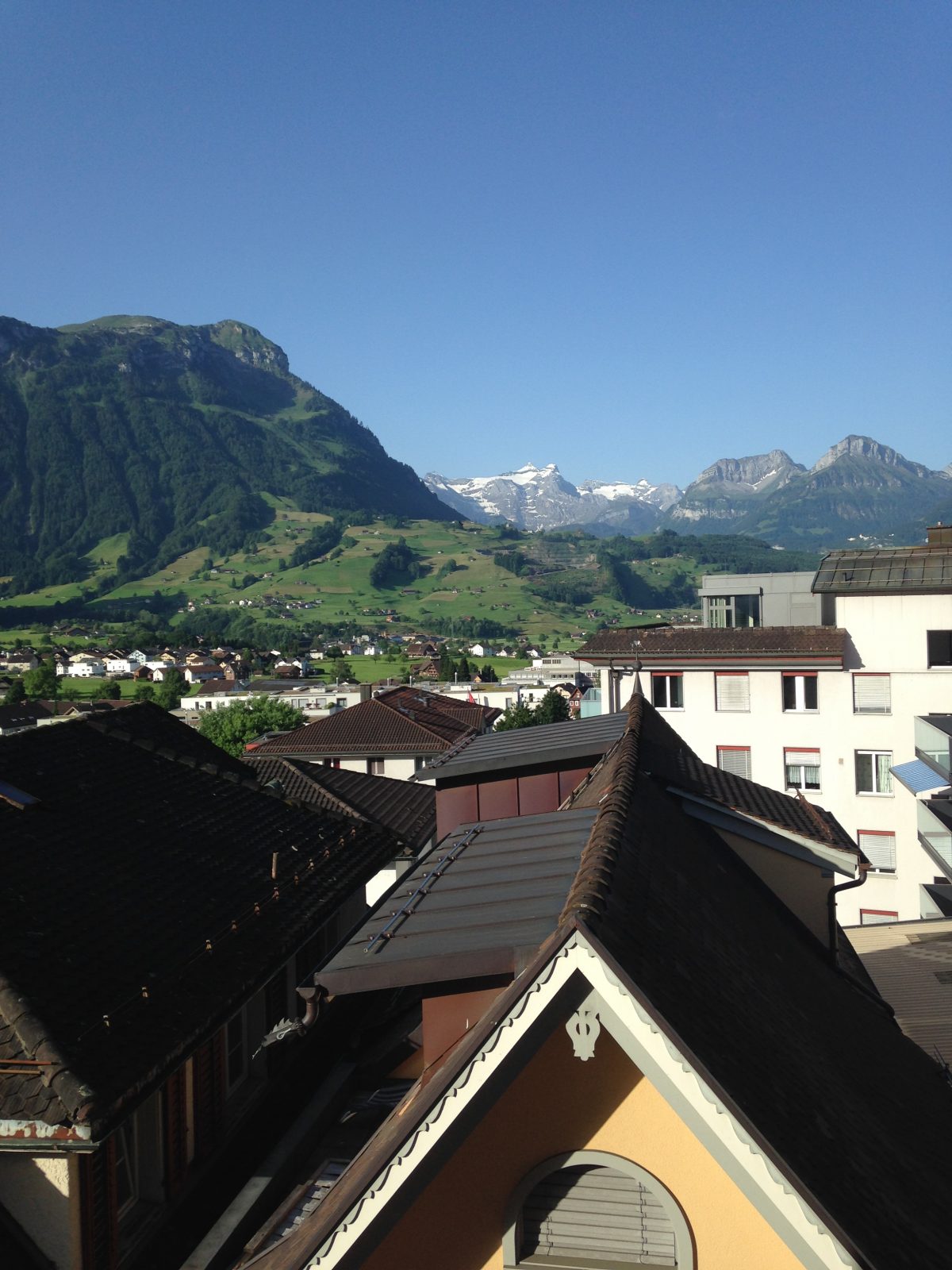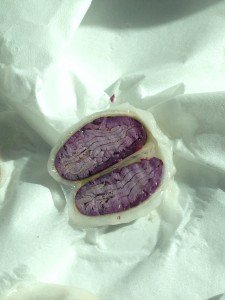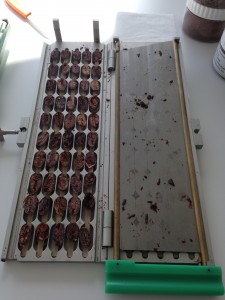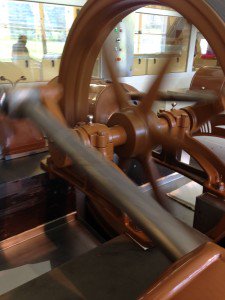Magic in the mountains: a visit to Bettys Swiss chocolate suppliers

Deep in the heart of Switzerland, the small town of Schwyz, home to Bettys chocolate suppliers, Felchlin, is both charming and beautiful. We arrived there in the middle of an unseasonal heat wave. In spite of this, there was still snow on the mountains – we weren’t in Kansas anymore! And whilst not quite the Land of Oz, Schwyz really is a place where magic happens.
The inside of a fresh cocoa bean
Felchlin is well known in the area and has a history even older than Bettys. Max Felchlin first began making and selling honey as early as 1908 and by the 1920s had expanded into other baking ingredients including cocoa butter and chocolate. It was around this time that he bought the stunning Liebwylen villa, still used today as the company’s head office.

Over 100 years later, with two generations of ownership and now with a unique management structure which ensures the company’s ongoing independence, the business has been able to expand; they employ over 130 people, run a successful cookery school for bakers and pastry chefs from around the world, have recently opened a brand new factory and of course, produce some of the world’s finest chocolate couvertures.
It was to this new factory that our host, Sepp Schönbächler, brought us on our first day. To understand Felchlin’s sourcing ethos is to understand why Bettys have established a long-term relationship with them. For Felchlin, quality and sustainability go hand-in-hand, respecting people and nature in working together. They believe that, to meet the needs of the present, it’s important to ensure prosperity and wealth for all, without compromising the future.
There’s no better way to guarantee ethical sourcing than with boots on the ground and Sepp himself invests time travelling through the cocoa plantations in Venezuela to meet the small, artisan growers that Felchlin support. He shares his background knowledge and years of experience in creating chocolate couverture to help farmers develop the conditions needed to grow the ideal cocoa bean – the star ingredient in the complicated process of making chocolate.
The conching machines

And it is complicated! As Sepp talks us through the many stages of making chocolate, I’m amazed that anyone ever discovered it (but that’s a whole other story!). Our morning’s education included a look at cocoa bean grading and its precise science. On its journey to here, the cocoa bean has already been harvested from the pod – and yes, fresh from the pod it is an amazing purple colour – flesh removed from the outside, fermented in small containers or under palm leaves and then dried in the sun, all before being shipped in sacks to our hosts in Switzerland.
At Bettys, we only use the finest cocoa bean – the Criollo from the region of Maracaibo in Venezuela, which accounts for just 3% of the world’s cocoa crop. These cocoa trees, known as Theobroma Cacao, crop just twice a year, and are grown in the rainforest, often amongst palms and spices. On arrival at Felchlin, the beans are cleaned and sterilised before being roasted in small batches – the roasting times and temperatures vary according to the flavour desired.
Once cooled, the cacao beans proceed to the winnower, where they are broken into pieces and the shells are removed leaving the cocoa nib. After a process of triple milling, and with a final grinding using small, ceramic balls, the ingredients to make the chocolate couverture are brought together: for dark chocolate, liquid cocoa mass, liquid cocoa butter, sugar and occasionally a touch of Madagascar vanilla are added and for milk chocolate, milk powder or powdered cream are added.
Cocoa grading

The mixture is then passed through a roller to arrive at a texture that is smooth to the tongue. And then begins my favourite part – the conching. Now, there are many types of conching machines, we learnt – from large industrial, heat-jacketed machines which will conch the couverture in no more than a few hours, to the delightfully old-fashioned conching machines which the Bettys couverture is made on.
Through a slow process of movement and aeration, the couverture is turned from a thick texture to a seductively smooth liquid. Over a 60 hour period the conching machines produce an astonishing amount of heat - and during a heat wave, standing next to one is not ideal! Yet so seductive is this process, with the added enticement of the delicious aroma, we couldn’t help but linger here as we watched our own chocolate couverture begin to take shape.
I could wax lyrical about the rest of our trip, from meeting local artisan chocolatiers to sampling traditional Swiss dishes, and from riding the gondola to a café with perfect views to our evening restaurant overlooking the very spot where Switzerland was founded. But I think the highlight, was the discovery of the real magic that goes into making our chocolate. There’s not a wizard behind the curtains at Felchlin, but there is a talented and dedicated team – none more so than the lovely Romy Haeberli-Arnold, whose impromptu demonstration of her hauntingly rich yodelling must in some part ensure our chocolate tastes as good as it does!


